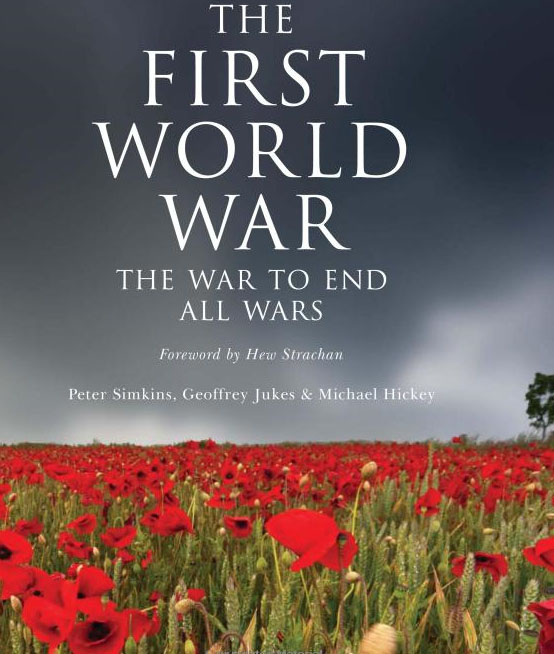The First World War The War to End All Wars
Review

The First World War The War to End All Wars, Peter Simkins, Geoffrey Jukes and Michael Hickey, Osprey, hardback, 2013, 364 pp. £25 ISBN 9781782002802
This conventionally, ironically titled, composite edition of four predecessor volumes first published in 2003, introducing the war and then focusing upon the three main theatres of war, brings together coverage of the fighting in all the theatres of the war and explains the new technology and tactics of a war which ‘changed warfare for ever'. It also assesses the impact of the war on both soldiers and civilians through first-hand portraits of both military and civilian survivors of the war. The soldier portraits include that of Private Archie Surfleet, a former reporter from Hull, who described his introduction to German shelling on the western front in 1916 in the year that he enlisted as ‘a terrible experience' and a feeling ‘so utterly indescribable' that he admitted that ‘God alone knows how awfully afraid I was'. The civilian profiles in clued that of a munitions worker Caroline Webb, a nineteen-year-old girl from Camberwell, who spent the war filling trench mortar projectiles risking poisoning from exposure to trinitrotolulene and experienced skin discoloration which caused such women to be nicknamed ‘canaries'.
A foreword by Professor Hew Strachan very briefly comparing the First World War with the Second World War, provides an overview of the former's theatre of operations and justifies the extra space allocated to the western front, since though it was more confined geographically, it was nevertheless ‘the heart of the war' on account of its strategic importance to both Germany, the Central powers, Britain and France. An introduction by Professor Robert O'Neill, recognising that ‘this book is but an introduction to a vast and fascinating topic' then explains the significance of the war ranging across Europe, Africa, the Middle East and East Asia and encompassing the Atlantic, Indian and Pacific Oceans.
A timeline covering the period from 1908 to 1923 is provided for reference and the book is lavishly illustrated throughout with full colour battlefield plans and black and white archival photographs. Its authors include a former soldier, a former diplomat and a former historian based at the Imperial War Museum. Re-issued to mark the commemoration of the centenary of the outbreak of the war it concludes with a relatively brief summary of the war's consequences and aftermaths, focusing upon the scale of the casualties; the territorial changes consequent on the war; a fairly cursory reference to its legacy of troubled post-war years in Britain and the failure of the Treaty of Versailles to solve more generally the problems arising from the war.

